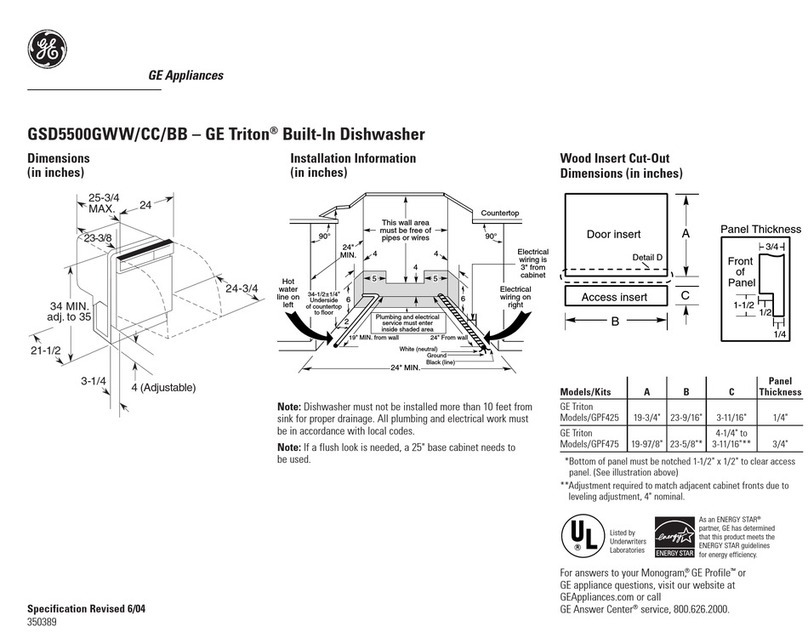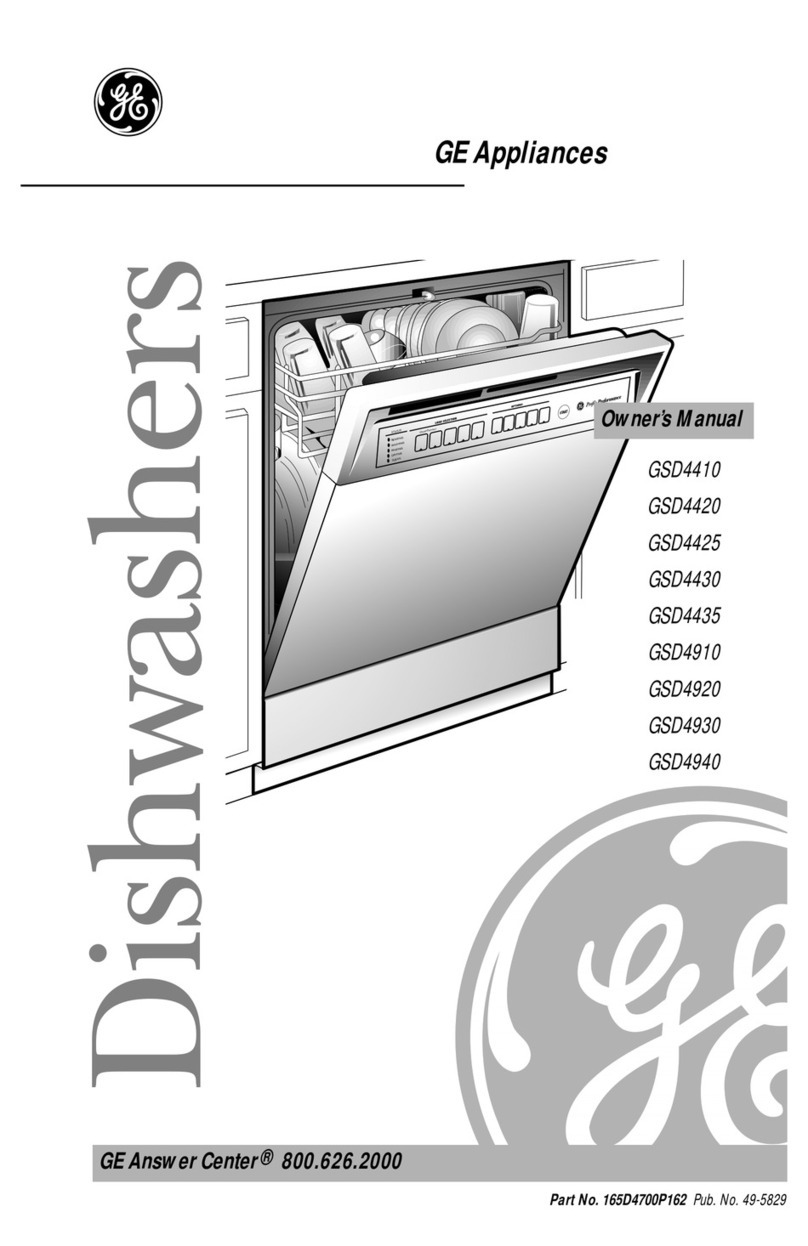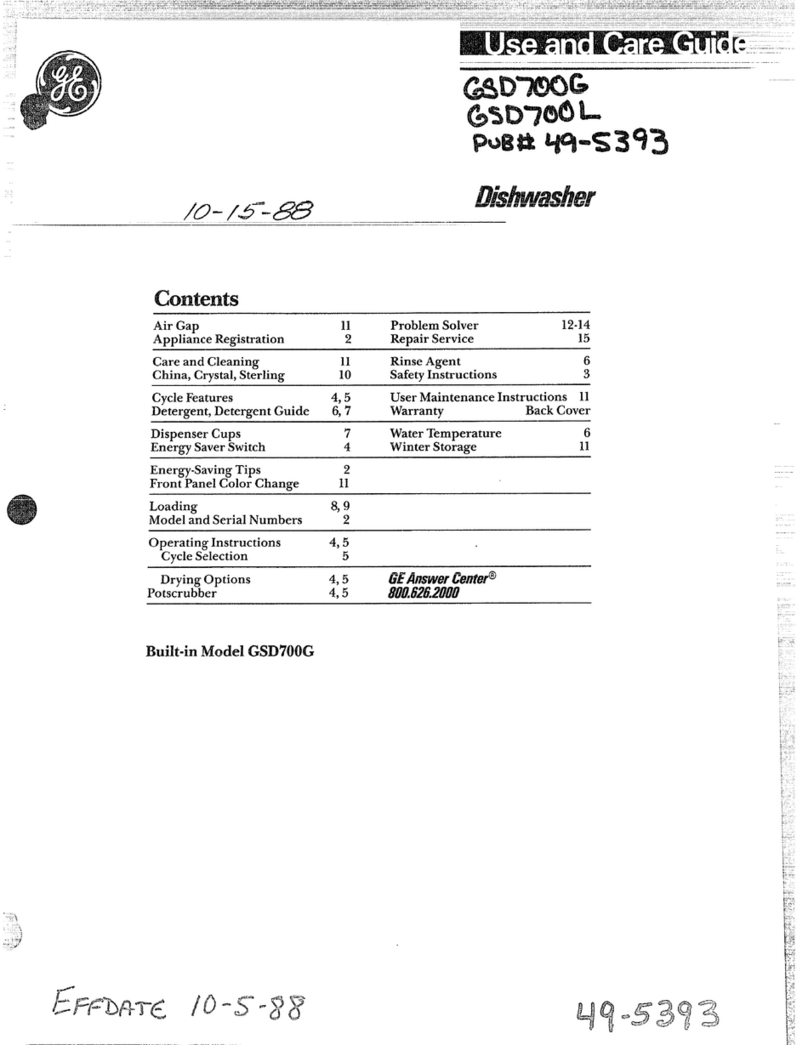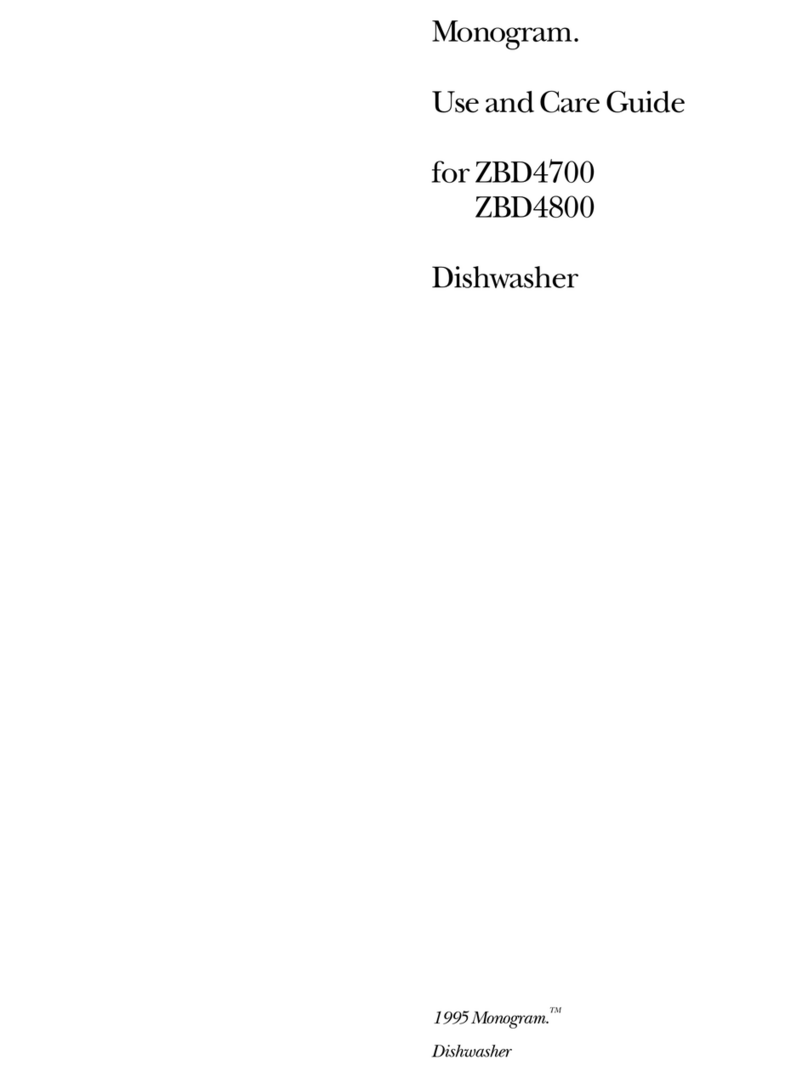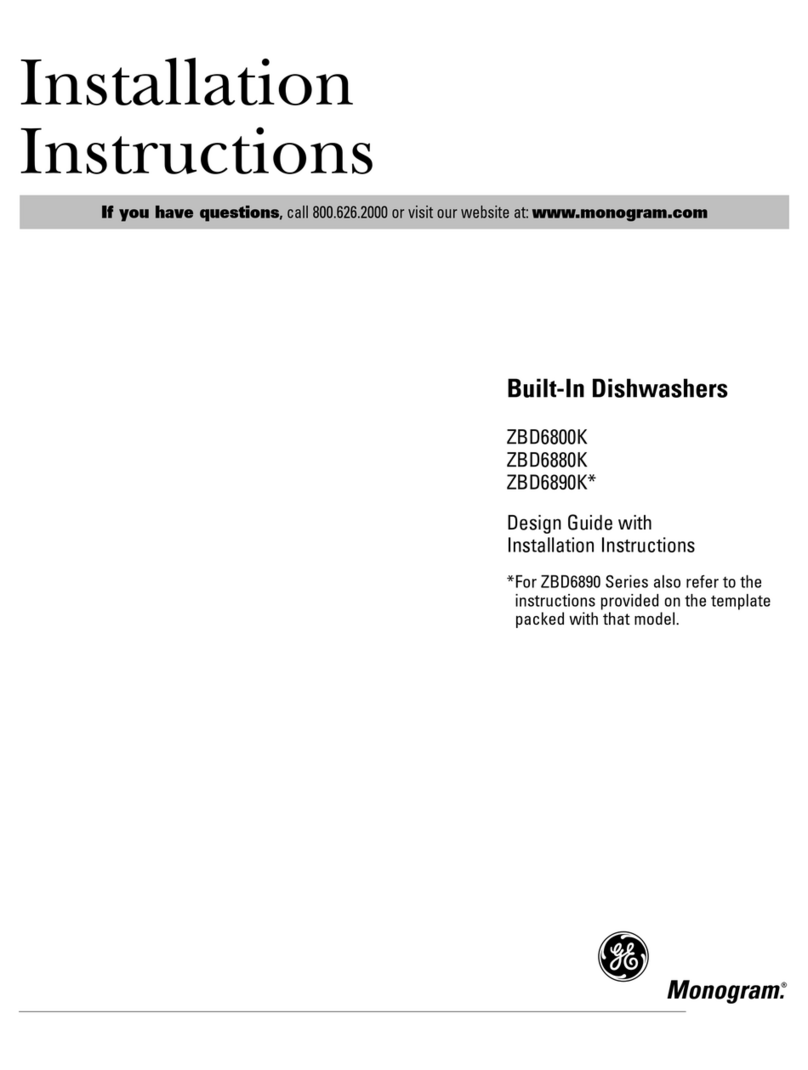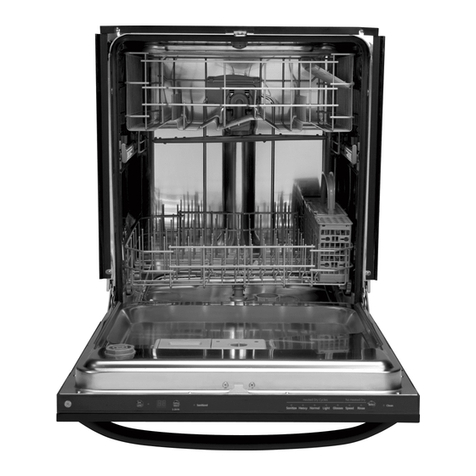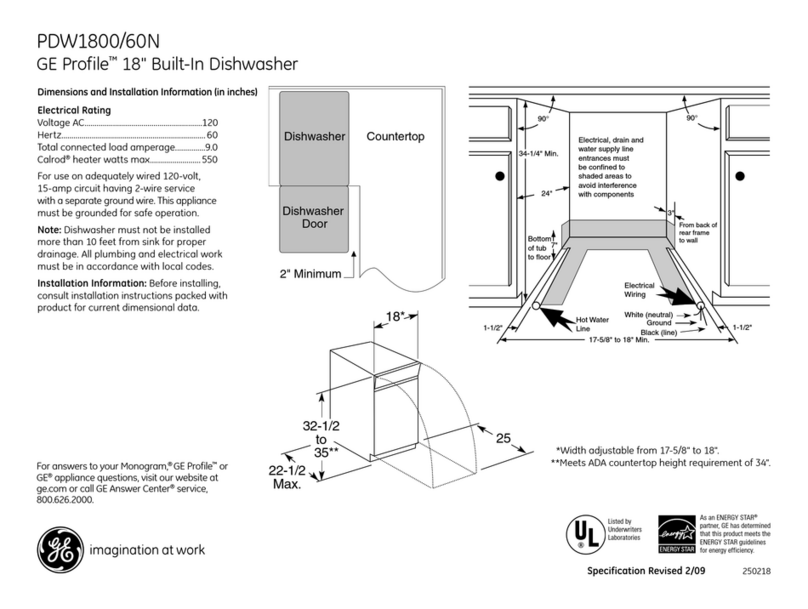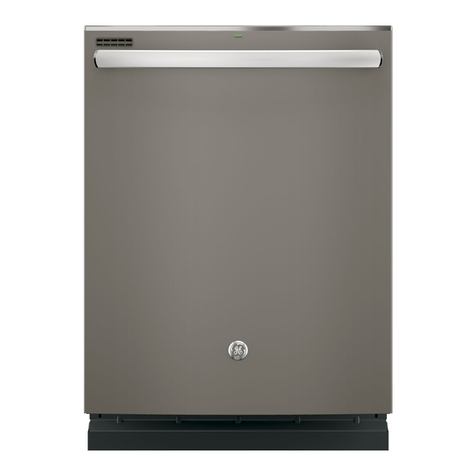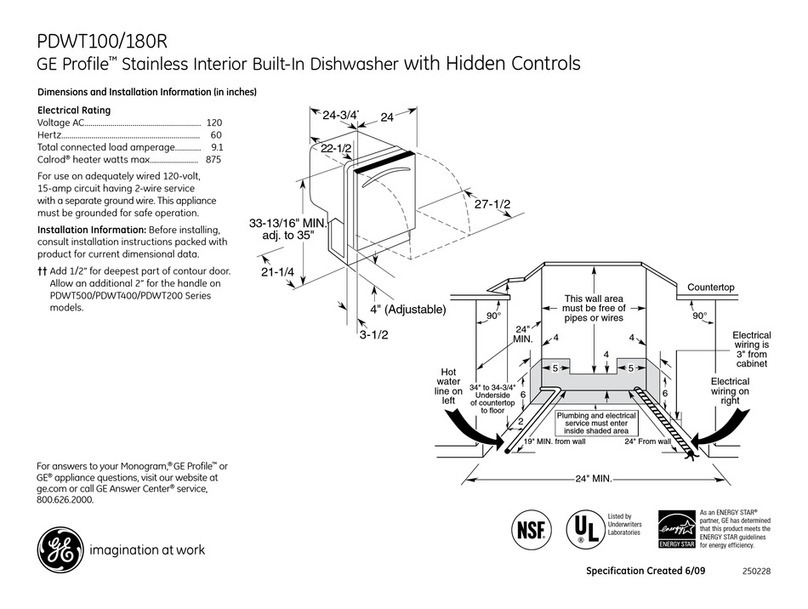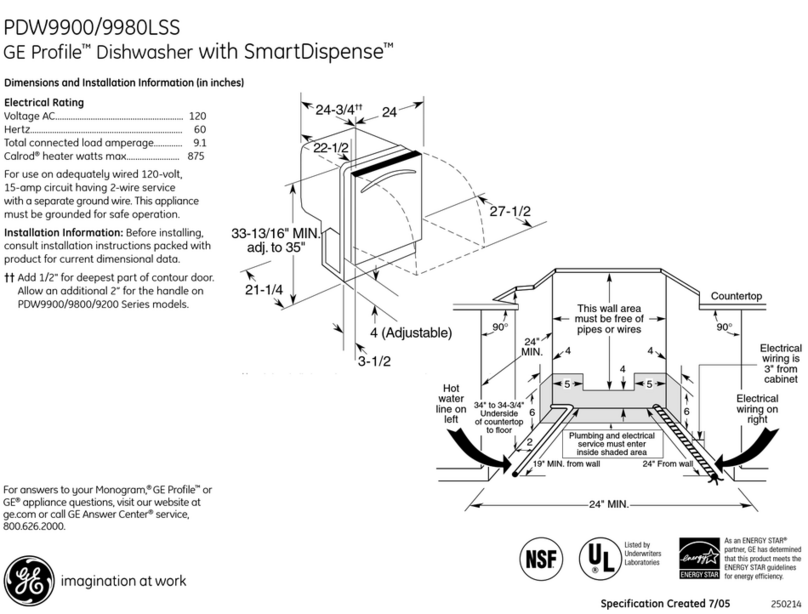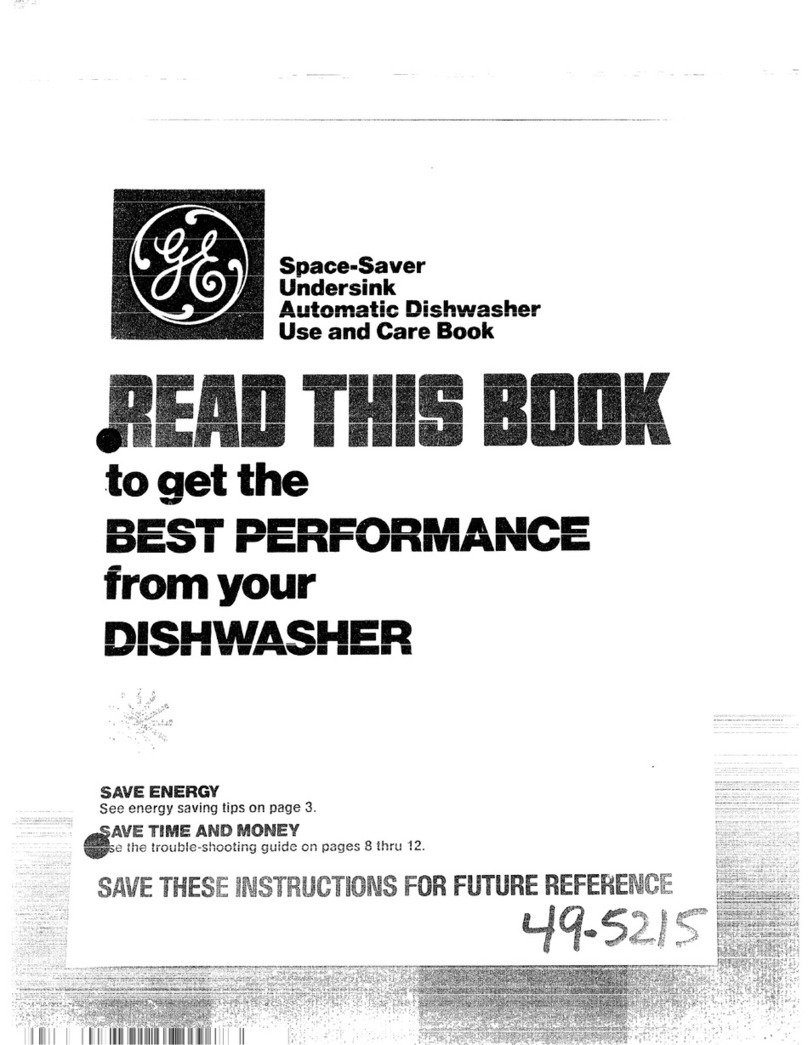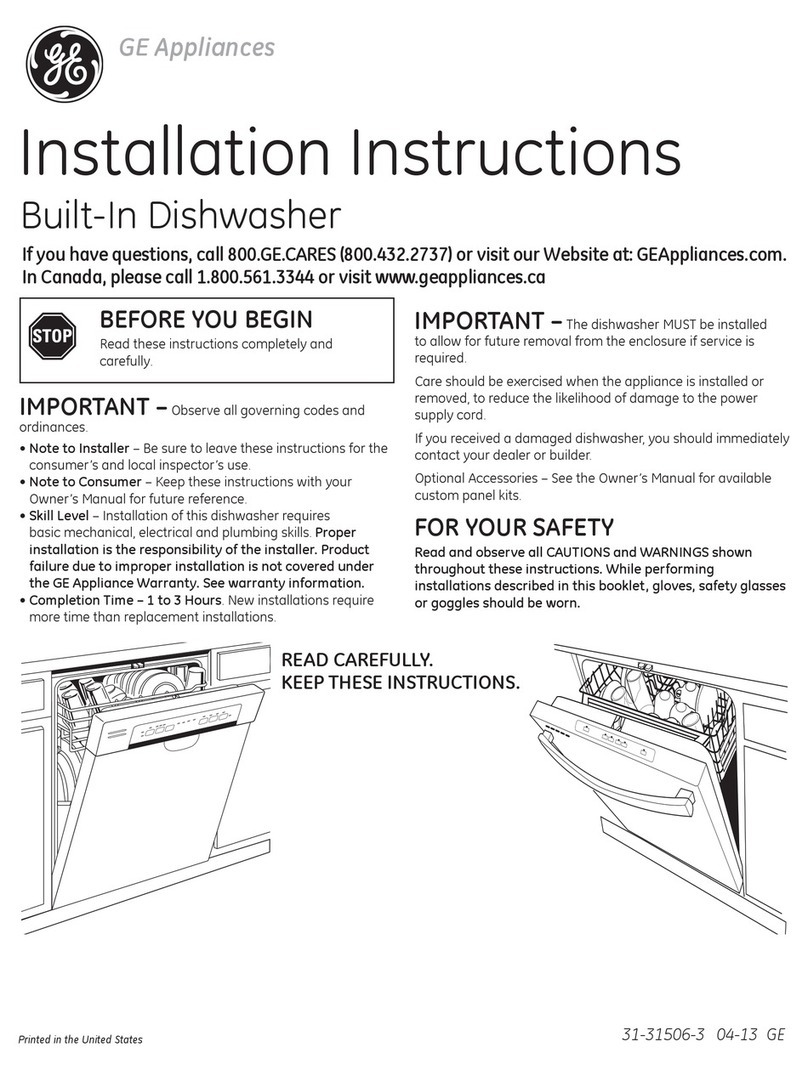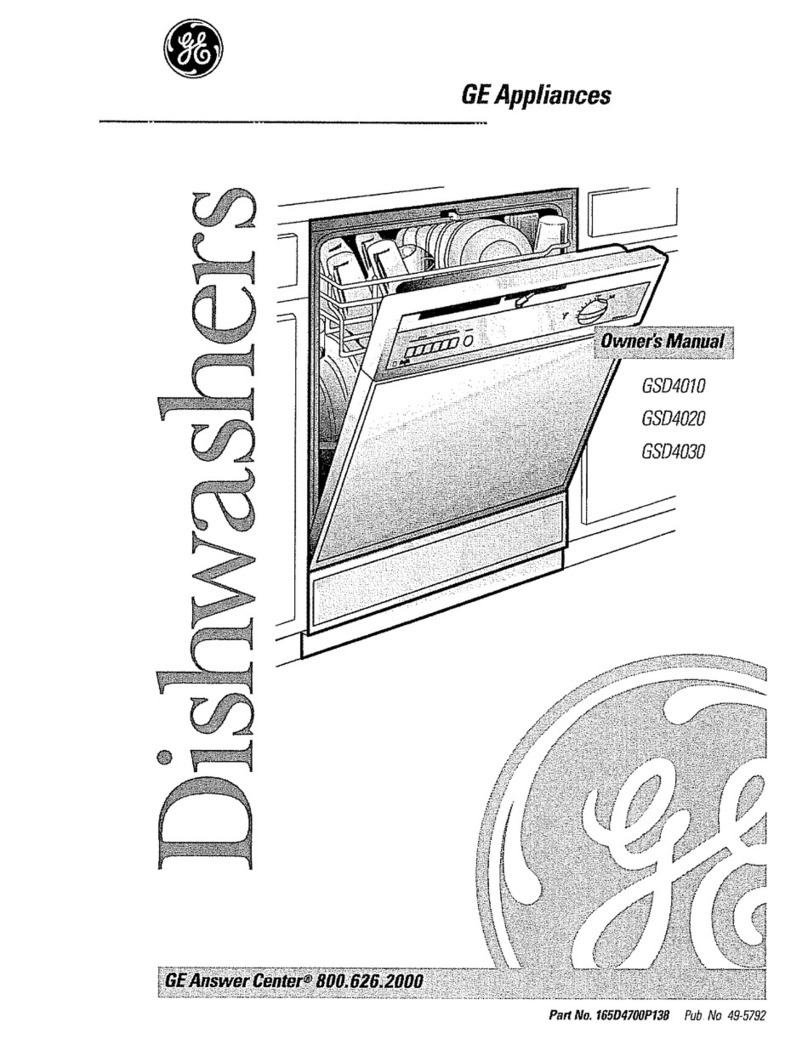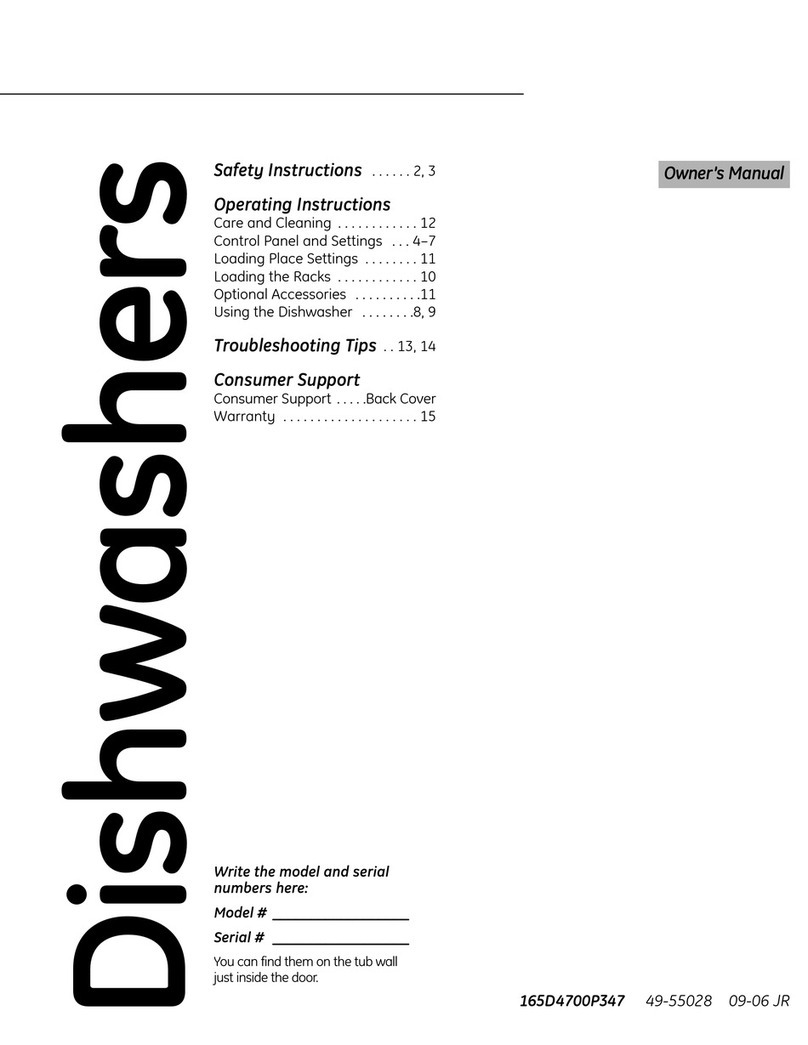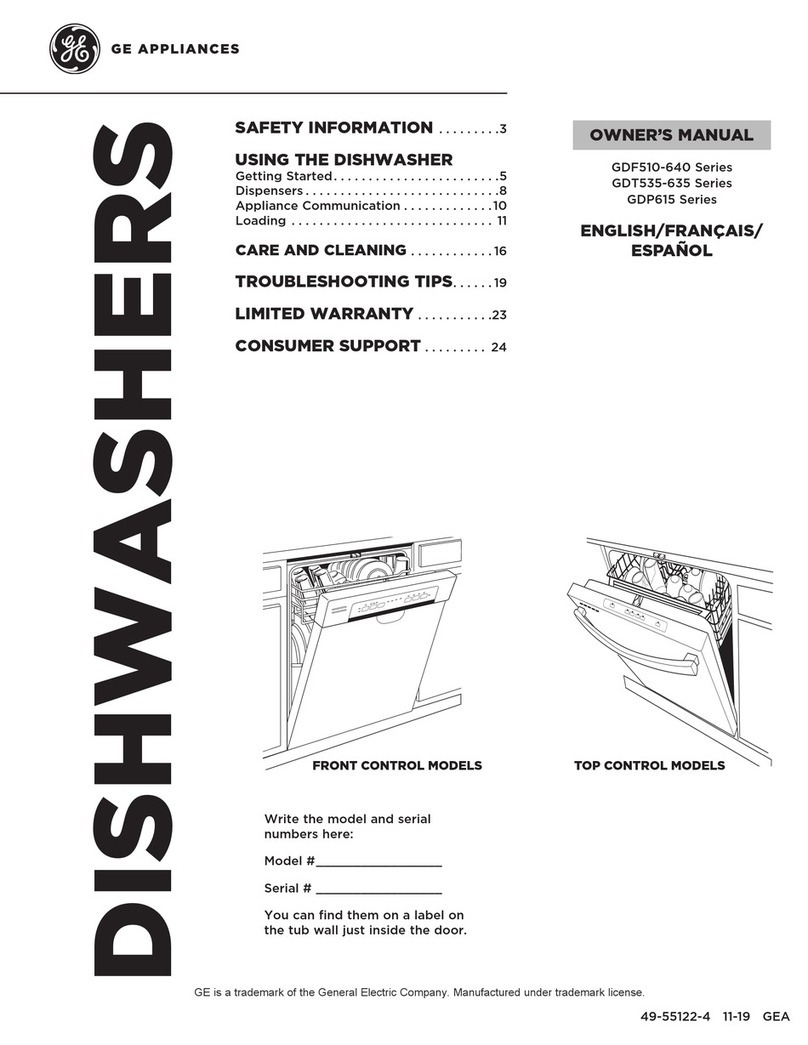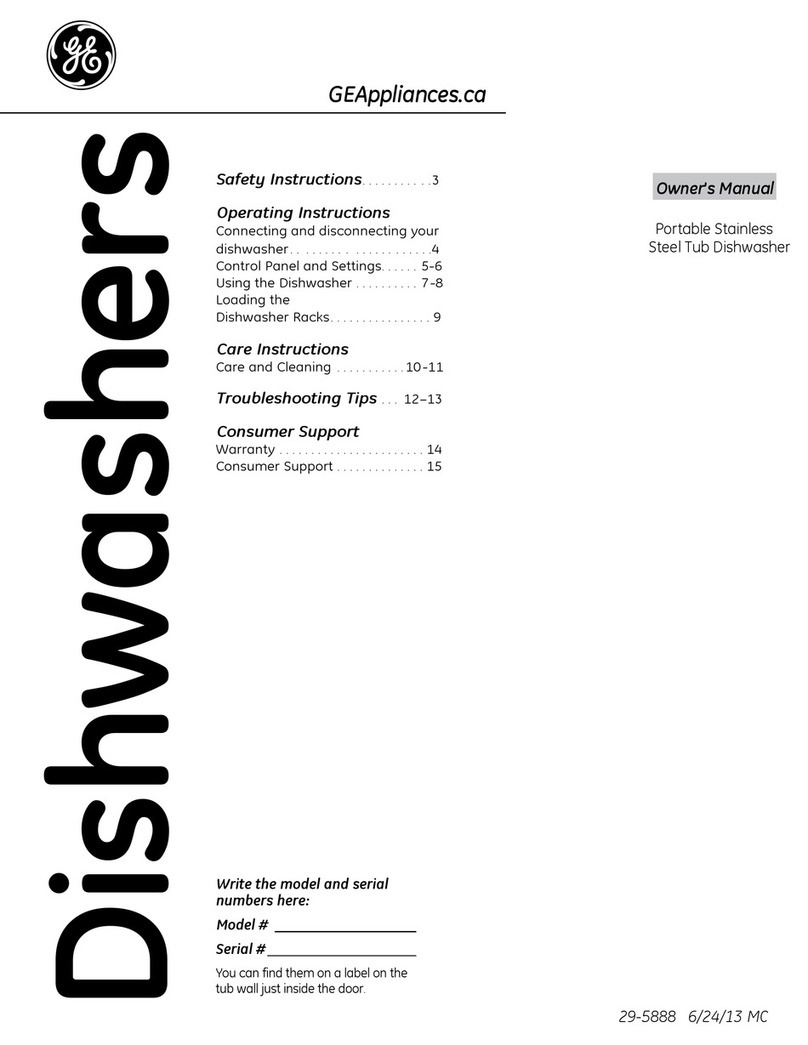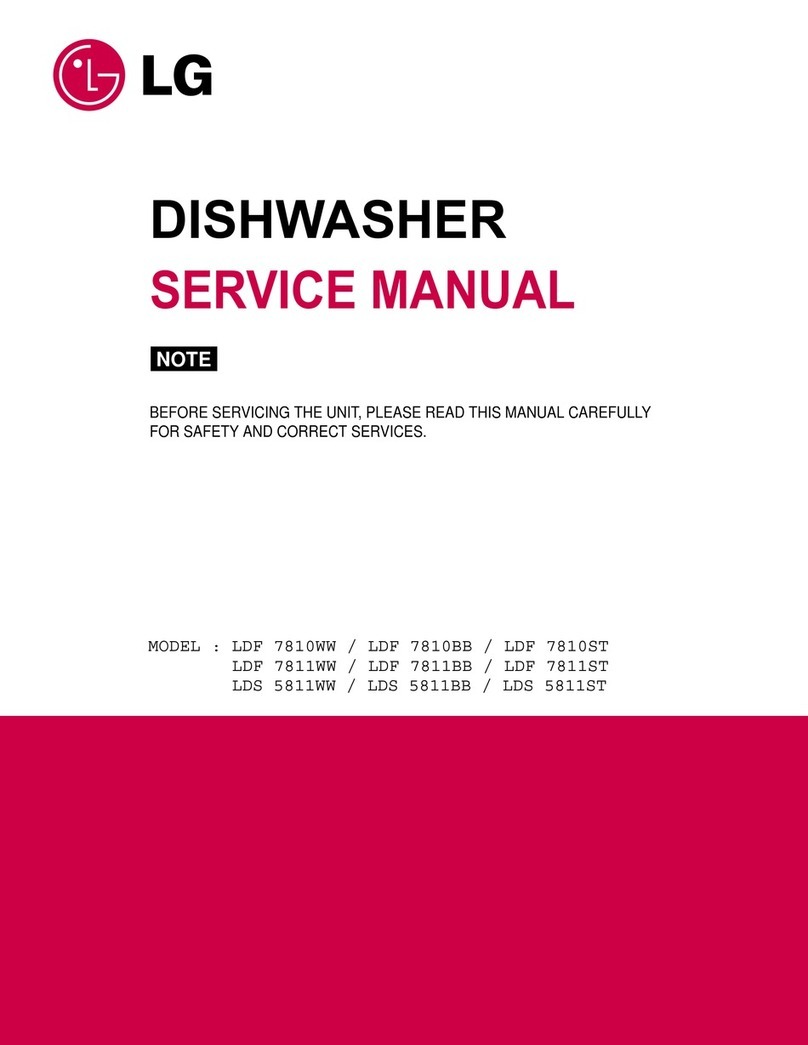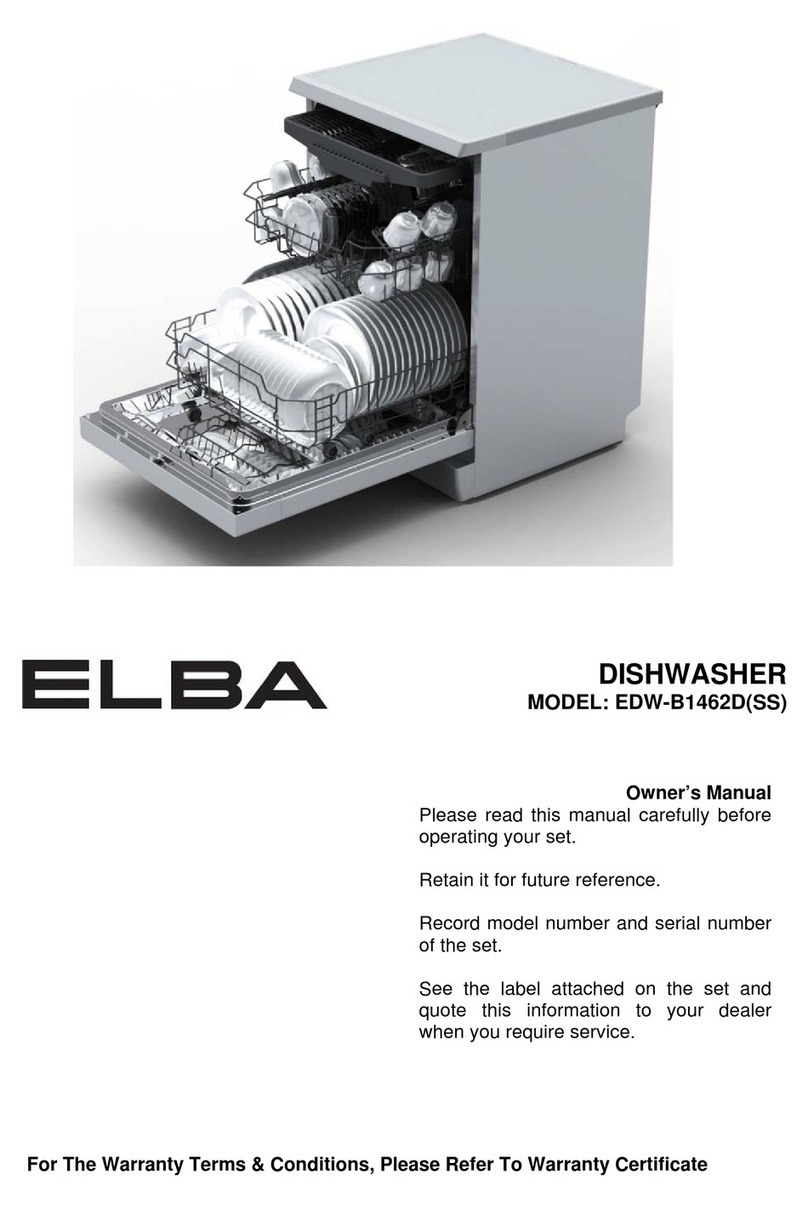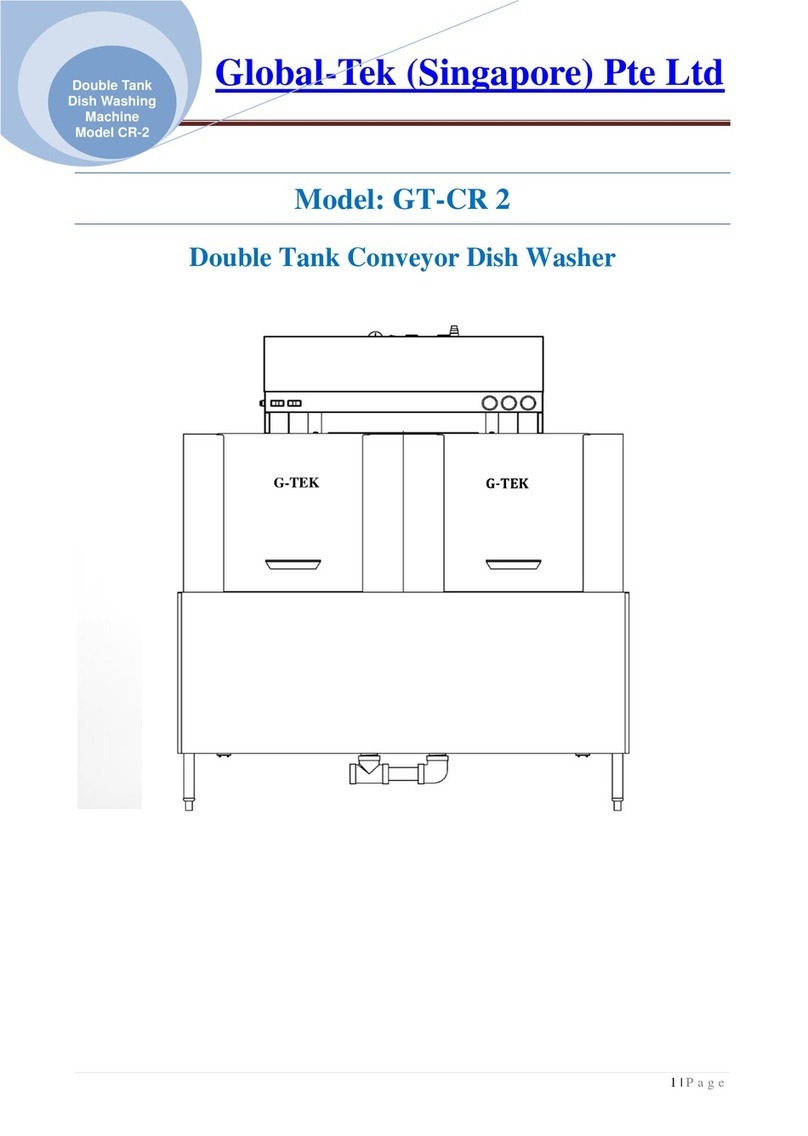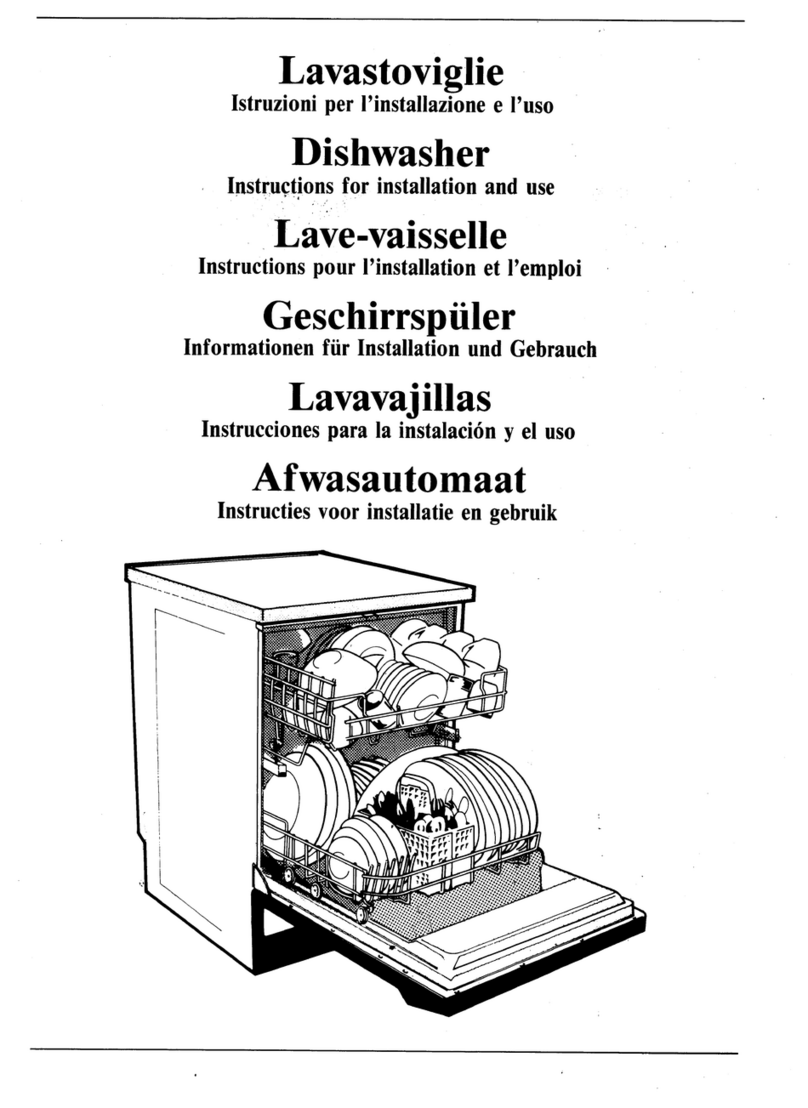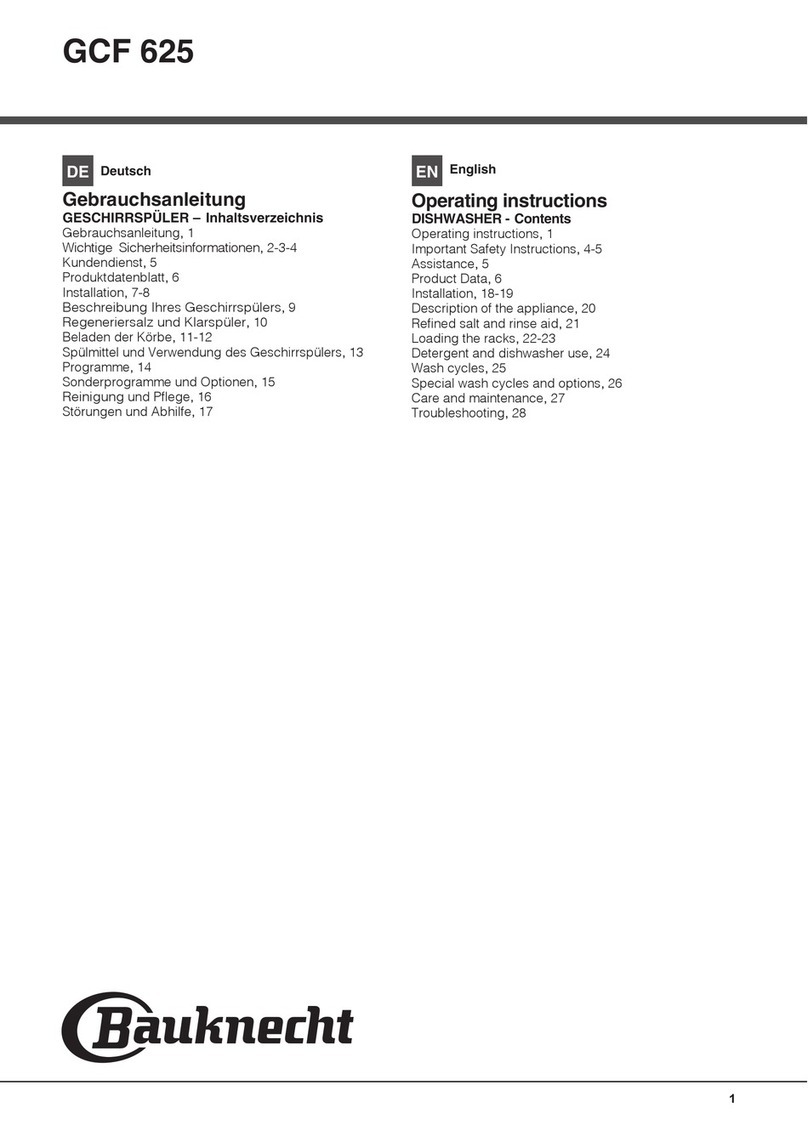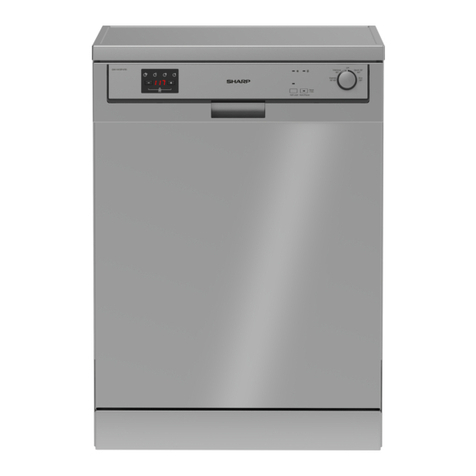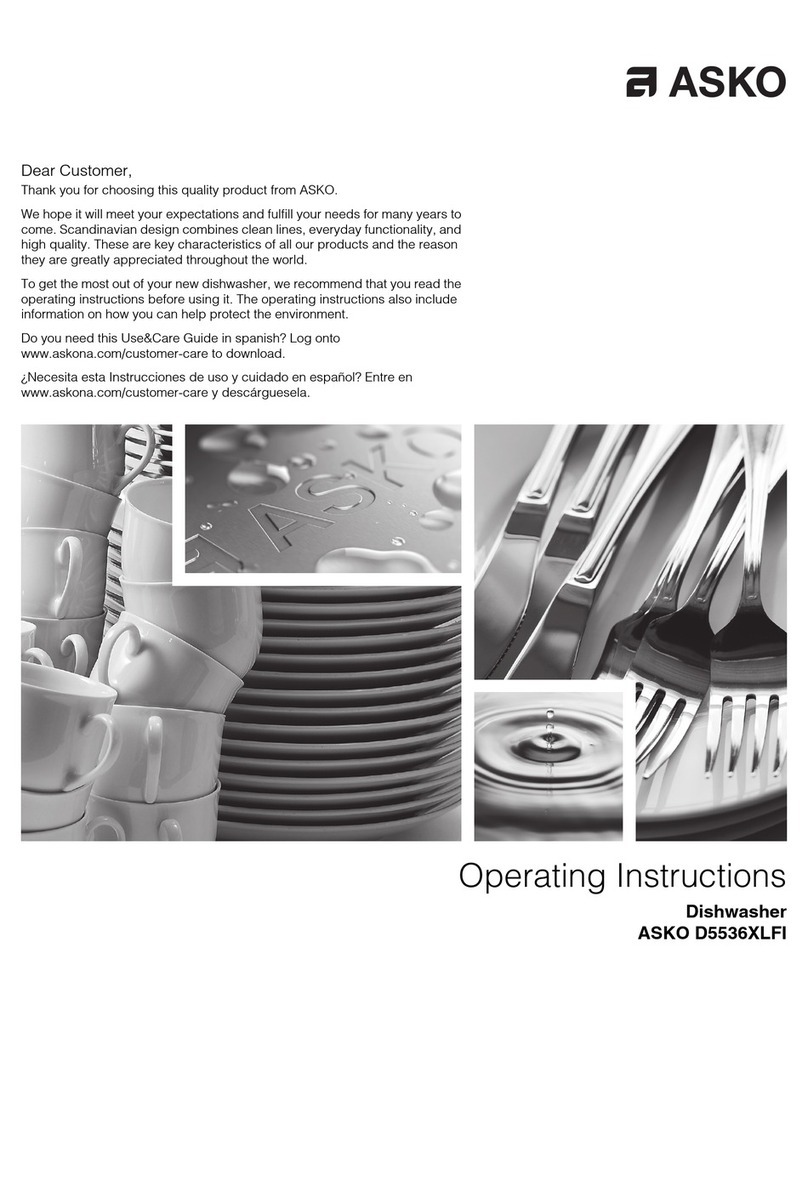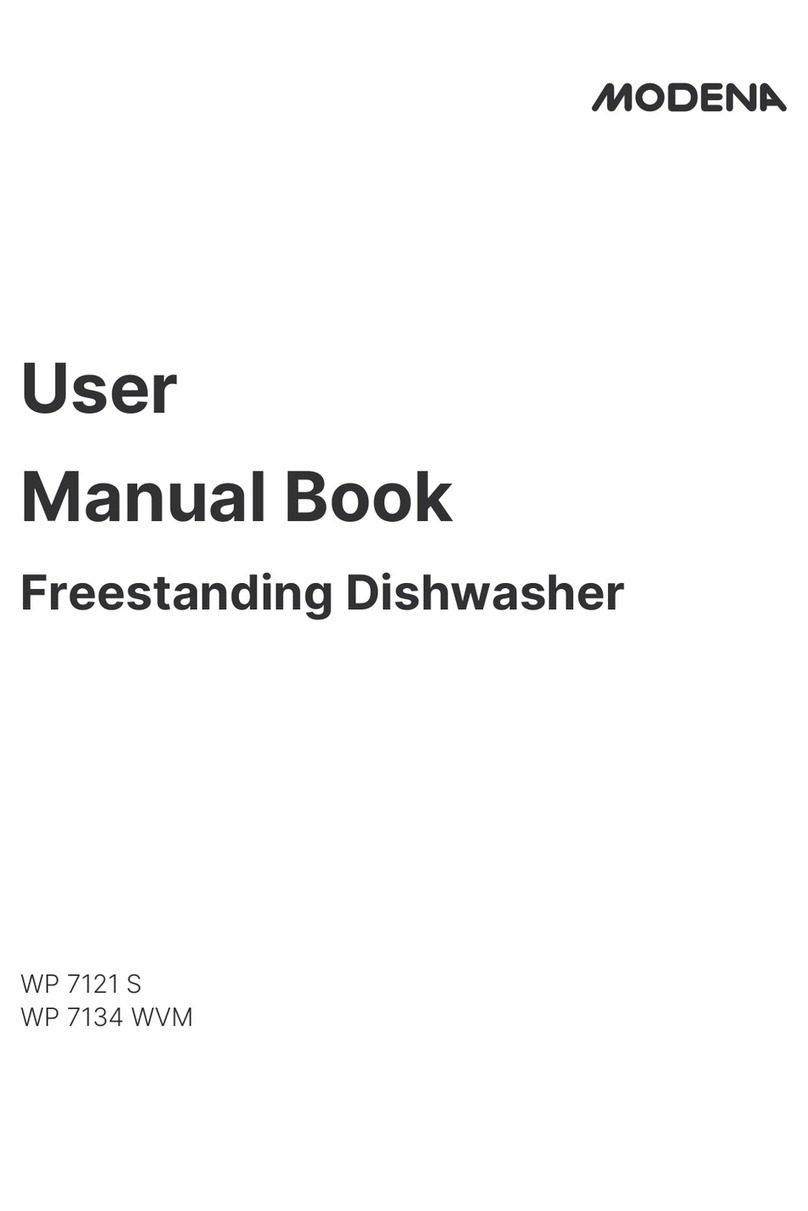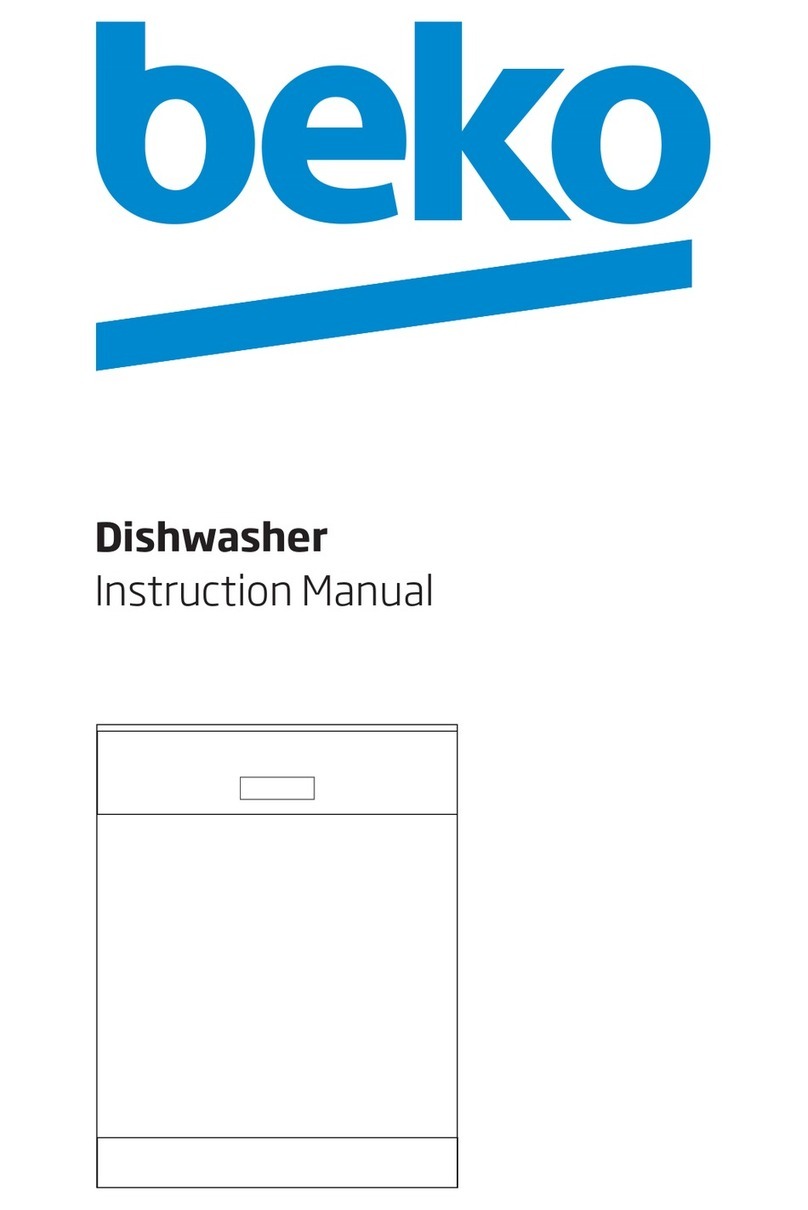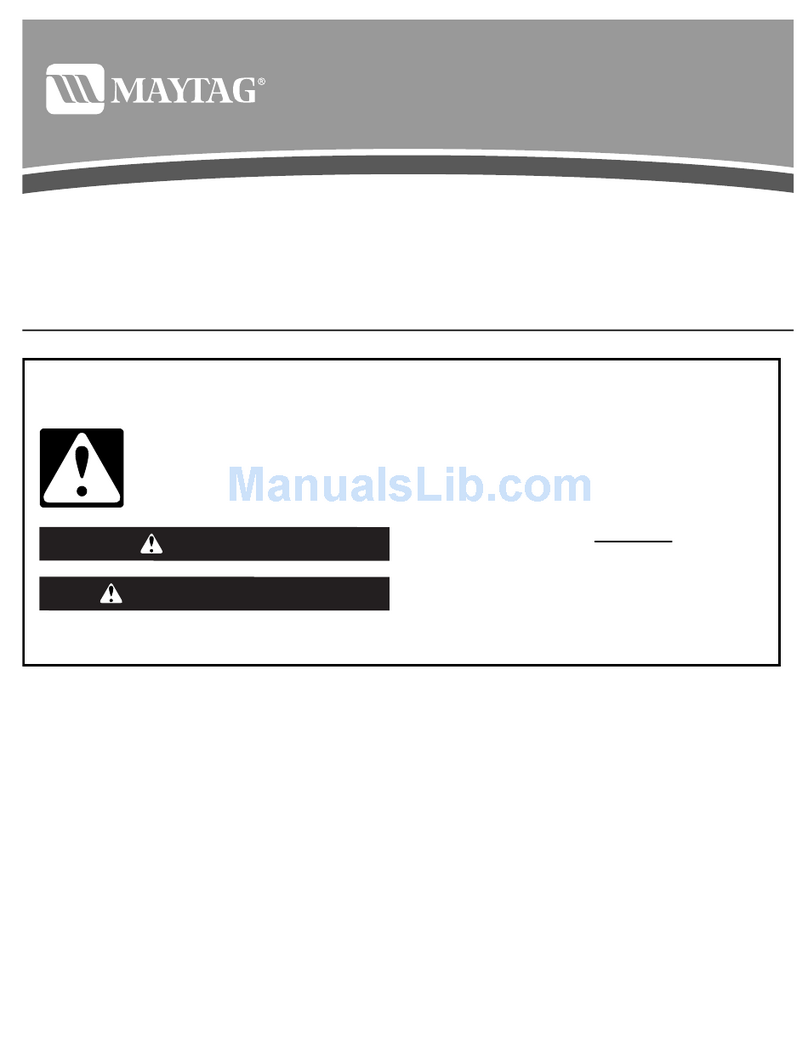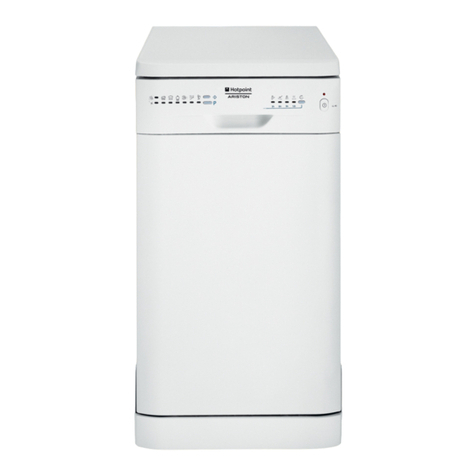GkMddkhwashingstarts
withHOI-’water.
‘Eogetdishescleananddry you
need hotwater,Tohelpyouget
waterofthe proper temperature,
your dishwasherautomatically
heatsthewaterin the washcycle.
For goodwashingand drying,the
entering watermustbeat least
120”F.Topreventdishdamage,
inletwatershouldnotexceed150°F.
How to test watertemperature:
Check yourwatertemperature
insideyourdishwasherwith a
candy or meat thermometer.
Let‘thedishwasherrun through
one filland pump out cycle,then
let the dishwasherfillwithwater
the secondtime.
When youhear the water stop
filling, unlatchthe door and slowly
open it.
Measure thetemperatureof the
water in thebottomof the tub this
way:
Removethe silverware basketand
place acandy or meat thermometer
in the watertowardsthe middle of
the tub. If the temperature is less
than 120°F,you will not getgood
washing results. Higher water
temperature is needed to dissolve
grease and activatepowder
detergents.
Helpful hints: If outside
temperatures are unusually low,or
ifyour water travelsalong distance
from water heater to dishwasher,
you may need to set your water
heater’s thermostat up. If youhave
not used hot water for some time,
the water in the pipes will be cold.
Turn on the hot water faucet at the
sink and allow it to run untilthe
water is hot. Then start the
dishwasher. If you’verecently done
kmndry or run hot water for
showers,giveyourwaterheater
timeto recoverbeforeoperatingthe
dishwasher.
Toimprovewashabilityifthe water
is lessthan 120°1?andyoucannot
adjustyourwaterheater: Selecta
longercycleand fillboth detergent
cupsatleasthalf-fidlwithdetergent.
HowtoWWarinseagent.
Arinseagentmakeswaterflow
offdishesquickerthanusual.This
lessenswaterspottingandmakes
dryingfaster,too.
Forbestdishwashingperformance,
Howtochooseanduse
detergent.
First,useonlypowderorliquid
dete~ents specificallymadefor
usein dkhwashers.other types
willcauseoversudsing.
Second, check the phosphate
content. Phosphatehelpsprevent
hard-watermaterialsfromforming
spotsor filmon yourdishes.If your
waterishard (7grainsor more),
yourdetergenthas to workharder.
Detergentswithahigherphosphate
levelwillprobably workbetter.If
thephosphatecontentislow(8.7%
useofarinseagentsfi~hasJET-DRY or less), you’llhaveto useextra
detergentwith hard water.
brand isreco&ended.
Rinseagentscome in either liquid
or solidform. Yourdishwasher’s
dispenserusesthe liquidform.
l-lowtofillltherinseagent
dispenser.Unscrewthe cap. Add
the liquidrinse agentuntilitjust
reaches the bottomofthe lip inside
the dispenser opening.Replacethe
cap. The dispenserautomatically
releases the rinse agentintothe
final rinse water.
M’you accidentallyspill: Wipe
up the rinse agentwith adamp
cloth. Don’tleavethe spillin the
dishwasher.It can keep your
detergent from working.
U’you can%find anyrinse agent,
write:
13ENCKISERCONSUMER
PRODUCTS, INC.
(“JET DRY”)
411W. Putnam Ave.
Greenwich, CT06830
Yourdishwasher’srinse agent
container holds 4% ounces. This
should last about 3months. Fill
as needed. Do not overfill.
Yourwaterdepartmentcan tell
you howhardyourwateris. So
can yourcountyextensionagent.
Or yourarea’swatersoftener
company.Justcalland ask them
howmany “grainsofhardness”
there are in yourwater.
How much detergentshould you
use?That depends. Is yourwater
“hard” or “soft”? Withhard water,
you need extradetergentto get
dishes clean. With softwater, you
need less detergent.
Toomuch detergentwith softwater
not only wastesmoney,it can be
harmful. It can cause apermanent
cloudinessof glassware,called
“etching.” An outsidelayerofglass
isetchedaway!Of course,thistakes
some time. But whytakeachance
when it’seasy to find out the
hardness ofyour water.
Keep your detergentfresh and
dry. Under the sink isn’tagood
place to store detergent. Toomuch
moisture.Don’tputpowderdetergent
into the dispenser untilyou’re
ready to wash dishes, either. (R
won’tbe fresh OR dry.)
M’your powder detergent gets old.
or hnrnpy9throw it away. Itwon’t
wash well. Old detergent often
won’tdissolve.
If you use aliquid dishwasher
detergent, these precautions are not
necessary because liquid detergents
don’t “lump” as they age or come
in contact with water.
